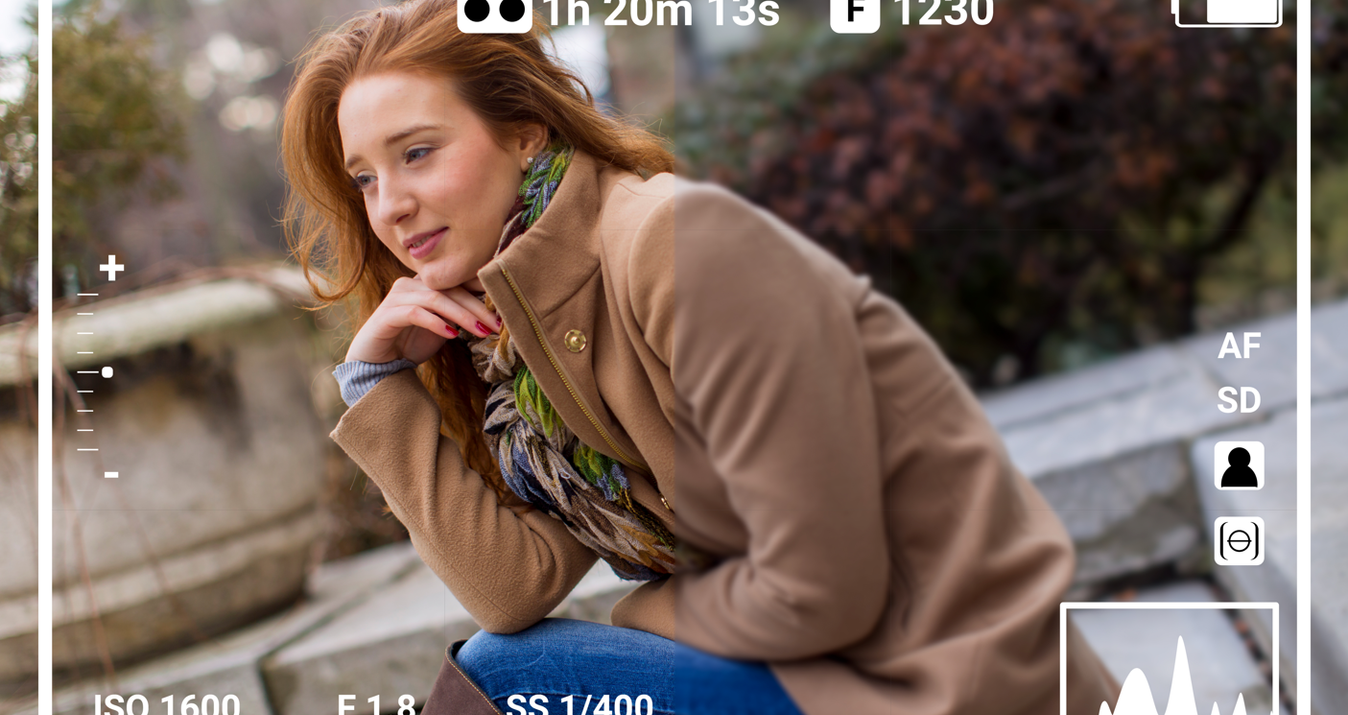How To Use Snipping Tool On Mac? Your Guide
June 11, 2025

Switched to Mac and miss the Snipping Tool? Discover how to take screenshots on Mac and explore top Mac photo editing software to boost your workflow.
For many Mac owners who have recently switched from Windows, the euphoria and inspiration from the quality of Apple's product is replaced by puzzlement and even frustration. After all, you know where to find the necessary tools and how they work on Windows, while working on a MacBook is a completely new experience.
"Does Mac have a snipping tool?" is one of the most constant user requests. Don't worry; there are special built-in tools that can do even more than Windows. Read our article to learn how to snippet on Mac and recommend Mac photo editing software to help make your workflow more comfortable.
Mac Screenshot Tools: An Overview
 Imagine you're a copywriter who needs clear visual examples when creating instructions, or a teacher who wants to share a task from a rare textbook with students. The Snip Command is the easiest solution for taking screenshots of your desktop. “But where is the snipping tool on a Mac?” you think. You have multiple options:
Imagine you're a copywriter who needs clear visual examples when creating instructions, or a teacher who wants to share a task from a rare textbook with students. The Snip Command is the easiest solution for taking screenshots of your desktop. “But where is the snipping tool on a Mac?” you think. You have multiple options:
the combination Shift + Command (⌘) + 5 for access to the screenshot toolbar;
pressing hotkeys for specific tasks;
customizing your snapshot settings.
Unlike Windows, Apple products integrate seamlessly with your iPhone or iPad. It allows easy transfer of freshly taken screenshots via AirDrop and direct insertion into iMessage.
Below, we will explain in detail how to take a snip on Mac using the methods mentioned above, allowing selection of the approach that most effectively streamlines and simplifies the workflow.
Hotkey Magic: Slice Your Screen in a Flash
 The Mac operating system comes with numerous keyboard shortcuts for creating shots. If you don't want to be overwhelmed by the interface and simply have a moment to take a pic to send a message, here are some useful combinations.
The Mac operating system comes with numerous keyboard shortcuts for creating shots. If you don't want to be overwhelmed by the interface and simply have a moment to take a pic to send a message, here are some useful combinations.
Action | Keyboard Shortcut | Description |
A full-screen screenshot | Shift + Command + 3 | Capturing the full screen in a screenshot. |
A screenshot of a chosen region | Shift + Command + 4 | Choose the area by using the crosshair that the cursor changes into. |
An image of a chosen window | Shift + Command + 4, then press Space | The cursor turns into a camera; move it over the window of your choice and click. |
Screenshots created by you will be automatically saved on the desktop if you have not made any other settings.
Your AI-Powered Photo Editor for MacOS and Windows
Discover Now!How to Capture the Screen on Mac Using the Built-in Toolbar
“How do I snip on a Mac if I am a beginner or just not good at memorizing hotkey combinations?”.You should use the toolbar. When you switch it on, a rectangle appears on the dark screen's background, allowing you to take a screenshot of a portion of your display. However, you have a further choice: photograph all of it or a single window, such as a document. After this, you'll see a smaller variation of the image in the lower right corner, ready for editing.
Unlike Windows, macOS' screenshot toolbar allows you to create a video of your full screen or a specific area of it without using any extra applications. This can be easily done using the two icons: Record Entire Screen and Record Selected Portion. To stop keeping track of, use the Shift + Command (⌘) + 5 bar combination and select Stop. This is an excellent option for generating footage to use for teaching purposes.
Optimize Mac Screenshot Tools: Timer and Saving
If screenshots are taken regularly, it is a good idea to set up the required settings ahead of time. To do this, select the Options menu from the picture's toolbar. It offers the ability to save your captured images, disable the cursor, and set a timer to enable you to prepare ahead of time for screen recording to begin.
As previously stated, screenshots are automatically saved to the desktop; however, you have the option to select Desktop, Mail, or Documents by clicking the "Save to" button. To save the screenshot elsewhere, select Other Location.
Adding a Screenshot Button to the Mac Touch Bar
For owners of older MacBook models with a Touch Bar, here’s another useful tip on how to take a snippet on Mac. A screenshot button can be added manually by placing it directly on the Touch Bar. To accomplish this, take these actions.
Click the Apple logo in the upper-left corner of your screen to access System Preferences.
Go to the Keyboard section and, in the Touch Bar shows dropdown, select App Controls to enable the addition of app tools to the Touch Bar.
Click Customize Control Strip to enter edit mode, then drag the Screenshot tool onto the Touch Bar.
In this way, another quick and easy method for taking full or partial screenshots is available — simply pressing the button added to the Touch Bar.
Finishing Touches: Screenshot Edits and Annotation Before Sharing
 Before sending a screenshot to a colleague, use editing tools to make your image clear. How to crop an image on a Mac to get rid of the unnecessary details? Right after creating a screenshot, click on its thumbnail to launch it in the Preview app. If, for some reason, the thumbnail doesn’t appear, access the app directly. Then choose Rectangular Selection to select the portion of the screenshot that should be saved. Next, find the Tools icon and click Crop to exclude everything outside the rectangle.
Before sending a screenshot to a colleague, use editing tools to make your image clear. How to crop an image on a Mac to get rid of the unnecessary details? Right after creating a screenshot, click on its thumbnail to launch it in the Preview app. If, for some reason, the thumbnail doesn’t appear, access the app directly. Then choose Rectangular Selection to select the portion of the screenshot that should be saved. Next, find the Tools icon and click Crop to exclude everything outside the rectangle.
Using mostly the built-in macOS tools, you can:
resize image on Mac by selecting Tools, then Adjust Size;
add text and change its color, size, and font by clicking the Markup icon;
daw using lines, a brush, or an arrow to highlight essential information;
highlight areas of the image using the Rectangle or Oval tools;
add arrows, rectangles, and ovals, and alter their color.
Remember to save the picture after making the required adjustments. Go to File > Save to save the current document, or use File > Save As to save it as a new file.
Luminar Neo: Create High-Quality Shots
 The built-in Mac editor offers basic features, which may be enough for quick edits without special visual effects. However, for professional work with graphics, advertising, or educational presentations, third-party software like Luminar Neo is vital. It fills the gap left by macOS’s limited functionality by providing:
The built-in Mac editor offers basic features, which may be enough for quick edits without special visual effects. However, for professional work with graphics, advertising, or educational presentations, third-party software like Luminar Neo is vital. It fills the gap left by macOS’s limited functionality by providing:
batch editing for working with multiple screenshots simultaneously;
layer support;
template application;
export options with various resolutions or formats suitable for print or web design;
advanced effects like filters, shadows, blurs, gradients, and more.
Additionally, Luminar Neo is valuable as an image size changer, preserving image quality during processing thanks to its AI-powered capabilities. It can adjust the color palette and brighten dark areas of the image using Enhance AI. If the lighting in your screenshot is insufficient, the Relight AI feature will automatically correct its flaws.
Exclusive Tools of Endless Possibilities in One AI Editor
Explore Now!Mac Screenshots: Effortless Simplicity Through Experience
 Together with you, we’ve journeyed from the puzzled “What is the snipping tool on Mac?” to grasp of the built-in features of the MacBook. With a few clicks and easy actions, you may capture a video or take a screenshot. However, a more robust tool like Luminar Neo is preferable for editing and annotation. With the help of this application, you can quickly improve the quality of your screenshot and submit it to a client with confidence.
Together with you, we’ve journeyed from the puzzled “What is the snipping tool on Mac?” to grasp of the built-in features of the MacBook. With a few clicks and easy actions, you may capture a video or take a screenshot. However, a more robust tool like Luminar Neo is preferable for editing and annotation. With the help of this application, you can quickly improve the quality of your screenshot and submit it to a client with confidence.
FAQ
How to crop a screenshot on a MacBook?
You can resize the screenshot by opening it in the Preview app, selecting the desired area with a rectangle, and then choosing the Crop function from the Tools menu.
How to record a screen video on a MacBook?
Press Shift + Command + 5 and find the icons to record the entire screen or a selected area. By clicking one of them, you will start recording your screen. To stop the recording, press Shift + Command + 5 again, then click Stop.
How to save a screenshot to a separate document?
To do this, click on the “Save to” menu in the Options section located on the toolbar and select the desired file.
How do I capture a portion of the screen in a screenshot?
Choose the region you wish to capture by simultaneously pressing Shift + Command + 4.
Is there a screenshot tool on Mac?
Indeed, Apple has integrated the ability to take screenshots into its devices. You can use a keyboard shortcut to activate the screenshot capability or find it on the toolbar by pressing Shift + Command (⌘) + 5.





